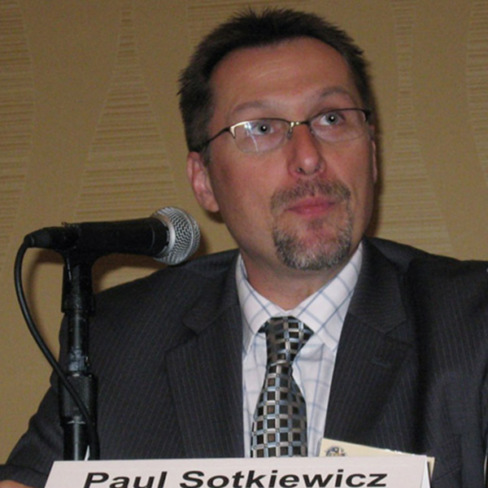COVID-19 Update
Stakeholders continued to question PJM’s stance on vaccinations for its employees during last week’s Operating Committee meeting.
After Paul McGlynn’s monthly report on PJM’s operations plan in response to COVID-19, Paul Sotkiewicz of E-Cubed Policy Associates again asked when the RTO intends to mandate vaccinations for all employees working on the campus. Sotkiewicz has brought up the vaccine issue at several consecutive OC meetings. (See “COVID-19 Update,” PJM Operating Committee Briefs: July 15, 2021.)
McGlynn said PJM is “still in the same place” and not currently requiring a vaccine for its staff. He said PJM continues to monitor the situation and the metrics of the pandemic and will make changes to procedures when necessary.

Sotkiewicz said he intends to ask the question at OC meetings “until the answer changes.” He said PJM management is “being absolutely cavalier and irresponsible” to not mandate the vaccine and would like to hear directly from the PJM Board of Managers regarding the issue.
“Getting a vaccine, given the situation, should be a condition for employment, and it goes to fitness for duty,” Sotkiewicz said.
PJM’s Darlene Phillips, chair of the OC, said the RTO’s leadership team has discussed the implications of mandating vaccines.
Ken Foladare of Tangibl said he was only speaking on his own behalf when he agreed with Sotkiewicz’s stance, which Foladare said will help with “maintaining grid reliability” given the increasing positivity rate of the COVID-19 Delta variant. He said it’s a “no-brainer” for PJM to mandate vaccines for staff considering the precedent set by other major employers. He would also like to see mandatory vaccinations for stakeholders attending in-person meetings unless they have a medical exemption.
Alex Stern, director of RTO strategy for PSEG Services, said “these are very challenging issues” and that utility companies around the country are currently having the same internal conversations.
Calling it “unprecedented times,” Stern said there are legal complications in mandating vaccines that PJM staff need to take into consideration.
“This is extremely complicated, and the thing we need to do is not panic and allow management to act deliberately,” Stern said. “I say that as an individual and not for my company.”
NRBTMG Sunset Endorsed
Members unanimously endorsed sunsetting the non-retail behind the meter generation (NRBTMG) business rules issue charge.
Terri Esterly, senior lead engineer in PJM’s markets automation and quality assurance department, reviewed the status of the NRBTMG business rules issue charge originally worked on at the OC in 2019. The sunsetting issue was first presented last month at the OC. (See “NRBTMG Sunset,” PJM Operating Committee Briefs: July 15, 2021.)
Esterly said the updated Manual 13: Emergency Operations and Manual 14D: Generator Operational Requirements were endorsed at the September 2019 MRC meeting after going through the stakeholder process. (See “Non-retail BTM Generation Rules Endorsed,” PJM MRC/MC Briefs: Sept. 26, 2019.)
The updates clarified the reporting, netting and operational requirements of NRBTMG, Esterly said, and included establishing an annual reporting process to determine the total amount of NRBTMG in PJM. He said PJM’s Capacity Exchange system enhancements were released in 2020 to help facilitate the administration of NRBMTMG requirements.
Stakeholders completed the first three key work activities in the issue charge endorsed in 2019, including completing a review of the existing NRBTMG business rules in agreements and manuals, proposing changes to the existing rules and determining the level of NRBTMG in PJM. Key work activity 4 in the issue charge was designed to be triggered only when the total amount of NRBTMG in PJM approached a 3,000-MW cap.
Esterly said PJM posts the total amount of NRBTMG in the RTO each November, and it hasn’t approached the cap. The NRBTMG was 1,171.5 MW in 2019 and 1,186.4 MW in 2020.
PJM proposed to sunset the NRBTMG business rules issue charge with the intent to bring it back and resume work when the 3,000-MW cap is reached.
Manual 14D Updates
Esterly also reviewed Manual 14D: Generator Operational Requirements updates to appendix A related to behind-the-meter generation (BTMG) business rules on status changes developed in MIC special sessions. He presented related changes to Manual 14G at the August Planning Committee meeting. (See “Manual 14G First Read,” PJM PC/TEAC Briefs: Aug. 10, 2021.)
The proposed Manual 14D appendix A updates are indented to address conflicts with the Reliability Pricing Model must-offer requirement and removal from generation capacity resource status business rules, Esterly said. The updates include addressing performance obligation impacts, load impacts from status changes and participation in PJM’s load response.
In a section on designating capability as a generation capacity resource and/or an energy resource, PJM added a business rule to make it clear a new service request must be submitted for the designation. Esterly said another rule was made to clarify the process to request a change from BTMG status to generation capacity resource status.
Esterly said in the section on participation in PJM load response, the RTO added the process to indicate that a BTMG unit is participating in PJM load response by providing on-site generator data.
PJM will seek stakeholder endorsement of the manual changes at the OC meeting on Sept. 10.
Manual 3A Updates Endorsed
Stakeholders unanimously endorsed a minor update to Manual 3A regarding model information and data requirements of flow devices.
Suzie Fahr, senior analyst in PJM’s power system modeling department, reviewed the changes to Manual 3A: Energy Management System Model Updates and Quality Assurance.
Fahr called the manual update “fairly small,” saying it resulted from a compliance review.
Section 2.2 was updated to clarify instructions for a transmission owner to add, remove and/or convert a flow device and submit the associated ratings, Fahr said. All references to a “breaker” in the section were updated to flow “device,” which Fahr said more accurately described the application of flow-capable equipment.
PJM will seek endorsement of the manual update at the Markets and Reliability Committee meeting on Aug. 25 and have the new language take effect the same day.


